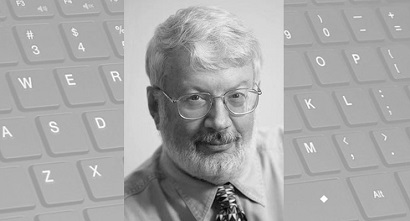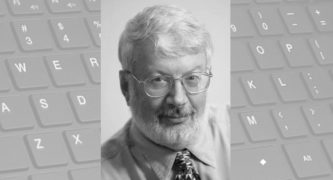 Last week someone desecrated the Pasadena Community Job Center at 500 North Lake Avenue by drawing a swastika – the anti-Semitic symbol of Nazism – on the front window of the building. The window is adorned with a mural of immigrant workers, reflecting the organization’s mission as an advocate for immigrants and workers rights. Whomever drew the swastika also painted a dollar sign next to it, which experts on bigotry recognize as another ugly insult to Jews.
Last week someone desecrated the Pasadena Community Job Center at 500 North Lake Avenue by drawing a swastika – the anti-Semitic symbol of Nazism – on the front window of the building. The window is adorned with a mural of immigrant workers, reflecting the organization’s mission as an advocate for immigrants and workers rights. Whomever drew the swastika also painted a dollar sign next to it, which experts on bigotry recognize as another ugly insult to Jews.
Swastikas and other anti-Semitic images and words are usually used to deface Jewish synagogues, cemeteries, community centers, and schools. In this case, the perpetrator put two anti-Semitic symbols on a building that primarily serves Latino and Latina immigrant workers. What’s that about?
The swastika – which Adolf Hitler adopted as the primary symbol for the Nazi Party in 1920 – is typically associated with the Nazi regime’s murderous legacy, especially the Holocaust. Its display is prohibited in Germany and some other countries.
“The swastika is usually associated with anti-Semitism, but we’ve come to see it over the past few decades as a universal symbol of hate, including white supremacy” explained Matthew Friedman, senior associate regional director of the Los Angeles office of the ADL, an anti-hate group which was originally called the Anti-Defamation League.
Separately, the ADL and the Southern Poverty Law Center, have identified incidents around the country where the swastika was painted on Catholic churches, public schools, college dormitories, Black-owned businesses and homes, cars, fences, sidewalks, and other places, as well as on Jewish institutions and Jewish-owned homes and businesses.
In other words, the defacing of the mural at the Job Center was more than an act of vandalism.
“From the get-go, we considered it a potential hate crime,” Pasadena Police Chief John Perez told me. “We have no witnesses or video evidence so far. We’re hoping someone will offer some evidence.”
According to Pablo Alvarado, executive director of the National Day Laborers Organizing Network (NDLON), which oversees the Job Center, the organization occasionally receives angry hate-filled phone calls, but this is the first time that the building has been physically defaced since the center opened in 2000.
“There’s definitely hostility toward immigrants in our community. We’ve received verbal threats and there’s lots of discrimination by landlords, employers, and retail stores,” Alvarado said. “But the Center has never been the target of a hate crime until now.”
“We don’t know the intentions of the individuals who did it, but we take it seriously, particularly in this moment in the history of our country,” said Alvarado. “There is no place for bigotry in our city.”
Public expressions of anti-Semitism have been escalating in this country since Donald Trump began running for president. Anti-Semitic comments on social media skyrocketed after Trump announced his presidential campaign in 2015. An ADL report uncovered more than 2.6 million tweets with anti-Semitic comments and images from August 2015 to July 2016—a huge upsurge from the previous year.
The ADL tabulated 2,107 actual antisemitic incidents – anti-Jewish vandalism, harassment, and assault, a broader category than official hate crimes – throughout the United States last year. This marks the highest number on record since the group began tracking antisemitic incidents in 1979.
This is part of a broader trend – the rise of hate crimes and incidents of all kinds under Trump.
According to FBI statistics, there were 6,121 hate crimes in 2016, increasing to 7,175 in 2018, the latest year for which nationwide information is available. That year, 57% of hate crime incidents were motivated by bias against race, ethnicity or ancestry, 20% of the attacks were motivated by a victim’s religion, and 18% by a person’s sexual orientation. The two biggest targets of hate crimes were Black Americans (1,943) and Jews (835). Physical assaults against people accounted for 64% of the 7,120 hate crime incidents that year.
The actual number of hate crimes is considerably higher. According to experts, more than half of all victims of hate crimes never file a complaint with the authorities in the first place.
Trump’s racist comments and frequent use of anti-Semitic stereotypes offer encouragement to haters and hate groups.
“We saw a definite uptick starting in 2016,” explained the ADL’s Friedman.
Bombings and shootings at synagogues, Mosques, gay nightclubs, and African American and Latino churches put people in physical danger and understandably generate the most media attention. Assaults on individuals with a clear motivation of hate happen all the time, but don’t get as much attention. Painting bigoted words and symbols – like swastikas, KKK, and Confederate flags — on buildings, sidewalks, cemeteries, schools, and other public places also constitute hate crimes and contribute to a climate of fear.
Since 2016, social media has amplified the voices of white supremacists and anti-Semites, but it is Trump who has lent them legitimacy and emboldened them to come out of the shadows. He verbalizes, encourages, enables, tolerates, winks at, and makes excuses for various forms of hate, including anti-Semitism, white supremacy, and nativism against immigrants, most notably when he said that some of the Nazis marching in Charlottesville in 2017 were “good people.”
In the past few weeks, concerned about his re-election, Trump has been using a racist dog whistle to frighten white suburbanites about a possible invasion of Black and brown poor people if Biden is elected and encourages the construction of low-income housing in white neighborhoods. Trump has invited a St. Louis couple who became infamous after they threateningly waved guns at Black Lives Matter protesters to speak at the Republican National Convention next week.
In this climate, is shouldn’t be surprising that hate incidents and hate crimes – including shootings – have escalated.
Pasadena is not immune from these trends. According to Chief Perez, Pasadena saw four hate crime incidents last year, directed at Latinos, Jews, and Asians. This year has already witnessed four hate crimes in the city, including crimes targeting gays and Blacks, one directed at a church, and the recent incident at the Job Center.
The Pasadena area has been no stranger to hate groups and bigotry. For many years, the city’ s school were racially segregated, the municipal pool and high-profile institutions, including the Tournament of Roses Board, was off-limits to Black residents, and Blacks and Jews were banned from some of the city’s private schools and clubs.
During the 1930s and early 1940s, American Nazis held rallies, and sponsored a Nazi summer camp, at the private Hindenburg Park in La Crescenta. Glendale was a breeding ground for the Ku Klux Klan in the 1920s and the racist John Birch Society in the 1950s. In the 1960s, it was the West Coast headquarters of the American Nazi Party. In 1962, when the KKK experienced a revival in response to the burgeoning civil rights movement, the Klan paraded down Glendale’s main thoroughfare, Brand Boulevard, with a horse brigade, marching band and burning cross. As recently as 2012, a tiny hate group called the Crescenta Valley European American Society, promoting “white identity and white pride,” had a brief presence on the internet and sponsored a European American Heritage Festival at Hindenburg Park.
Such overt expressions of anti-Semitism and white supremacy have declined but not disappeared. Trump – whose campaign for president included making offensive comments against Mexicans, immigrants, Black Americans, Jews, women, and the physically disabled – has been a harbinger of hate.
But Trump’s actions have made more Americans aware of the upsurge of of white supremacy and anti-Semitism and its dangers, including here in Pasadena.
TheADL issued a statement on Twitter condemning the incident at the Job Center. “We need to ensure that Pasadena and all communities are #NoPlacefor Hate and no place for #antisemitism.”
“Hate is hate. It doesn’t matter what or who the target is,” said Jason Moss, executive director of the Jewish Federation of the Greater San Gabriel and Pomona Valley.
The Pasadena branch of the NAACP denounced the incident in a statement. “NAACP Pasadena stands with our day laborers and families against this racist attack to intimidate and bring fear, this is absolutely not acceptable in our city or beyond. We are stronger together.”
Pasadena Mayor Terry Tornek said: “Our City’s strength is sustained by our diversity, so when one group is targeted we all suffer. We will not tolerate this behavior.”
“Hate, and symbols of hate, must be rejected and denounced wherever they occur, especially in our city,” said City Council member Victor Gordo, whose district includes the Job Center.
Because nobody was at the Job Center when this occurred, and the Pasadena Police Department does not yet have any clues who did it, we can’t get into the head, or the soul, of the perpetrator. The person could be part of an organized hate group, or she or he could simply be an individual with a great deal of pent-up anger and hate toward Jews and/or immigrants.
But even if we can’t identify the offender or his/her motives, we do know that people who hate one minority group tend to hate other minority groups.
“One group of people who hate will shift that hate to another group,” said Chief Perez.
The same mindset that feels threatened by immigrants, also tends to harbor hostility toward Jews, African Americans, Latinos, Muslims, and LGBT individuals. That is why different groups that are targets of bigotry often join forces to educate people about prejudice and discrimination and to mobilize against hate and oppression. The recent protest marches against police misconduct and racial profiling in Pasadena, for example, were supported by Black Lives Matter and the NAACP, Jewish, Muslim, and Christian organizations as well as groups like the ACLU, NDLON, and Pasadenans Organizing for Progress (POP).
That reality is what led Dr. Martin Luther King to observe, in his famous “Letter from Birmingham Jail,” that “All men are caught in an inescapable network of mutuality, tied in a single garment of destiny. Whatever affects one directly, affects all indirectly. I can never be what I ought to be until you are what you ought to be, and you can never be what you ought to be until I am what I ought to be.”
Peter Dreier, a longtime Pasadena resident, is professor of politics at Occidental College and a founder of Pasadenans Organizing for Progress. His books include The100 Greatest Americans: A Social Justice Hall of Fame, The Next Los Angeles: The Struggle for a Livable City, We Own the Future: Democratic Socialism, American Style; and the forthcoming Baseball Rebels: The Reformers and Radicals Who Shook Up the Game and Changed America.














 0 comments
0 comments


